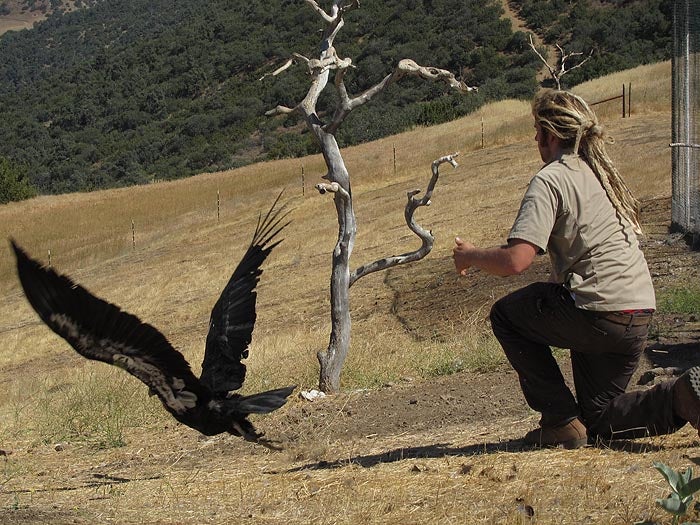One of the balancing acts faced by conservation agencies is how to conserve and protect as many species as possible from extinction with limited funding and finite resources. In the U.S., conservation agencies are supported and guided by the Endangered Species Act, the seminal wildlife conservation law signed by President Nixon in 1973 that is currently being reviewed by Congress.
Over time, the number of threatened and endangered species added to the ESA has grown faster than the funding for their recovery. As a result, conservation agencies have struggled in making decisions about how to apply the available resources to the greatest effect.
The result of this inadequate funding has been that while the ESA has brought back many species from the brink of extinction, many of those species remain on “life support,” never fully recovering to independence once again. This adds fuel to the debate over the effectiveness of the ESA.
“The ESA requires that responsible agencies restore listed species to a point where they are secure, self-sustaining components of their ecosystem,” explained Leah Gerber, an Arizona State University professor in the School of Life Sciences and the founding director of the Center for Biodiversity Outcomes. “This is arguably an impossible goal given the significant human impact on species and their habitat, and a budget that is a fraction — roughly 20 percent — of what is needed to recover listed species.”
A USFWS worker releases a California condor into the wild. The birds were brought back from the brink in the 1980s thanks to a successful breeding program. Photo courtesy of the U.S. Fish and Wildlife Service
Where to spend those precious funds is a complex issue.
So Gerber, as part of a team of researchers, developed a tool that can be used to help guide conservation scientists to decisions on how to best use limited funds to conserve the greatest number of species. The tool was developed in collaboration with the U.S. Fish & Wildlife Services (USFWS) in a two-year project supported by the National Socio-Environmental Synthesis Center. The tool, called the Recovery Explorer, can be used to evaluate potential consequences of alternative resource allocation strategies. This work was motivated, in part, by past critiques of USFWS recovery allocation processes.
The researchers write about the Recovery Explorer in “Endangered species recovery: A resource allocation problem” in the Oct. 19 issue of Science. Gerber said that Recovery Explorer can be used on a laptop or in a decision-theater type environment.
For example, it can be used to examine how different values-based inputs (e.g., desires for taxonomic representation or regional parity in funding) influence optimal allocation and recovery outcomes; or the effect of uncertainty in technical inputs (e.g., extinction risk, cost) on funding allocation and outcomes.
“The tool is meant to be exploratory, not prescriptive, allowing decision makers to examine alternative approaches to resource allocation by making the important components of the decision process transparent,” explained Gerber, who also is an ASU senior sustainability scientist.
“In my view, one of the most promising possibilities of the tool is that it can be used to estimate what outcomes will be gained for a given investment,” she added. “For example, if a private donor is willing to give $3 million toward biodiversity conservation, we can provide a list of possible actions that align with the specified objectives.”
Gerber and Michael Runge, a research ecologist with the U.S. Geological Survey’s Patuxent Wildlife Research Center, led the team of conservation scientists from around the world in developing the tool.
“We designed the recovery explorer tool to allow managers to compare the consequences of different allocation approaches,” Runge explained. “We also include options for managers to include objectives related to taxonomic, regional inclusion or other societal values.”
“The Fish and Wildlife Service is responsible for leading and catalyzing recovery efforts for more than 1,500 species in the United States,” said Gary Frazer, USFWS assistant director for ecological services. “This is a valuable addition to our tool kit, applying modern decision science to help us consider how best to allocate our limited resources to conserve the many species that are in trouble and need our help.”
Not all endangered species are fauna: Plants also get recovery plans. The kokia cookei, native to the Hawaiian island Molokai, was thought to be extinct in the 1950s. There are currently only 23 known plants, all existing as grafts. Photo courtesy of the U.S. Fish and Wildlife Service
The methods used by Recovery Explorer are referred to as optimal resource allocations. Other countries, such as Australia and New Zealand, have reported success using comparable frameworks, Gerber said. The reason for this is that fully funded recovery plans tend to be more successful than partially funded recovery plans.
“Resource allocation is not about saving some species and letting others go extinct,” the authors state. “It is about finding a way to better order the work so that as many species as possible are recovered given the limited resources available at any moment in time.”
Top photo: Once thought to be extinct, the black-footed ferret is making a resurgence thanks to the efforts of conservation groups. Photo courtesy of the U.S. Fish and Wildlife Service
More Science and technology

Indigenous geneticists build unprecedented research community at ASU
When Krystal Tsosie (Diné) was an undergraduate at Arizona State University, there were no Indigenous faculty she could look to in any science department. In 2022, after getting her PhD in genomics…

Pioneering professor of cultural evolution pens essays for leading academic journals
When Robert Boyd wrote his 1985 book “Culture and the Evolutionary Process,” cultural evolution was not considered a true scientific topic. But over the past half-century, human culture and cultural…

Lucy's lasting legacy: Donald Johanson reflects on the discovery of a lifetime
Fifty years ago, in the dusty hills of Hadar, Ethiopia, a young paleoanthropologist, Donald Johanson, discovered what would become one of the most famous fossil skeletons of our lifetime — the 3.2…


